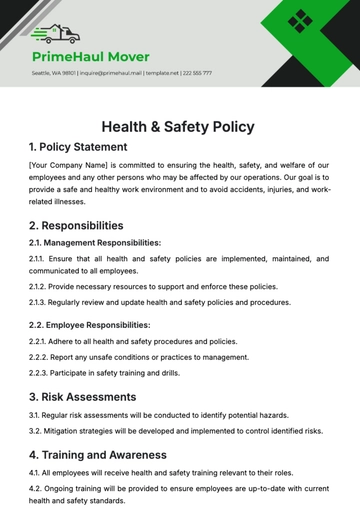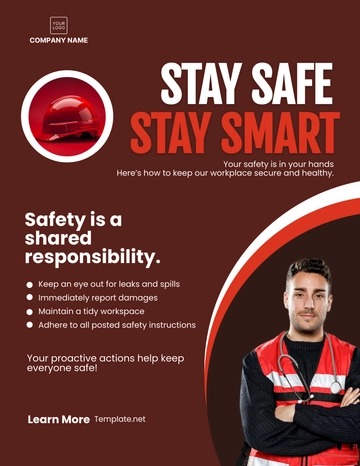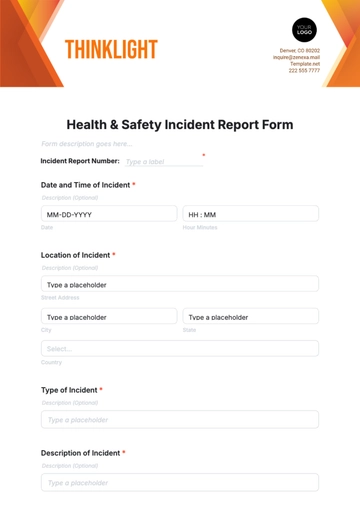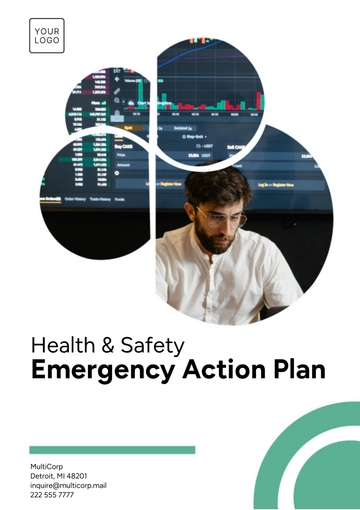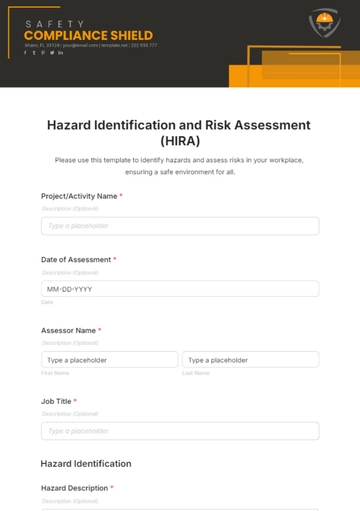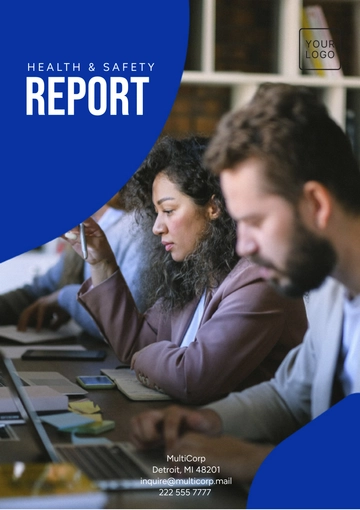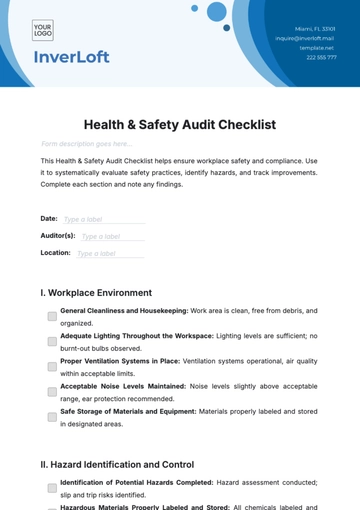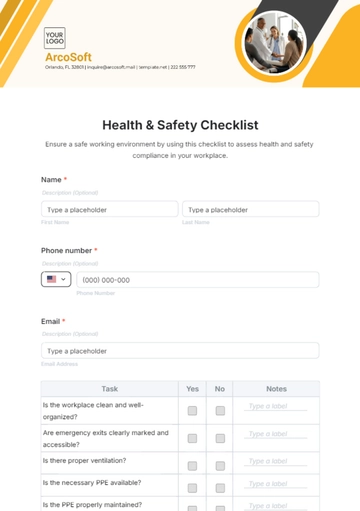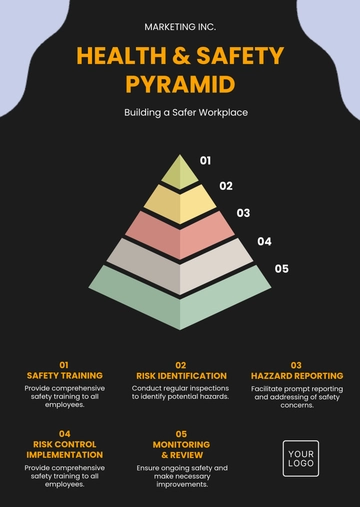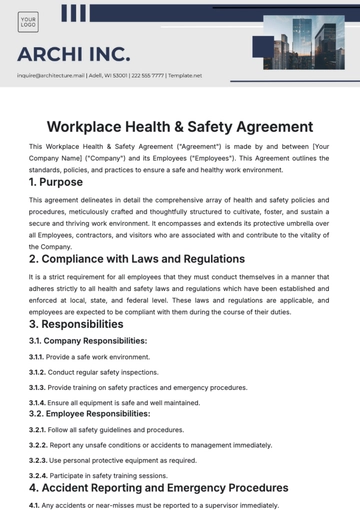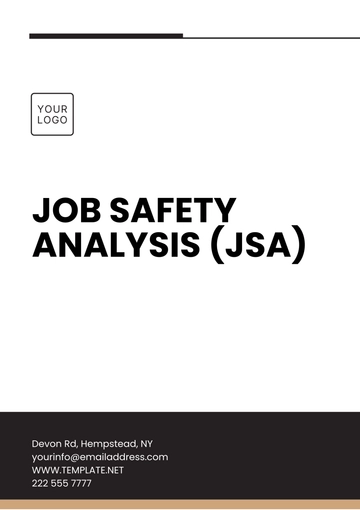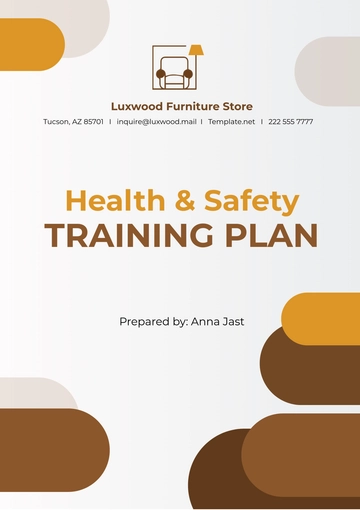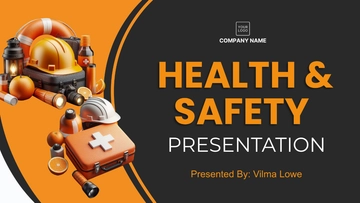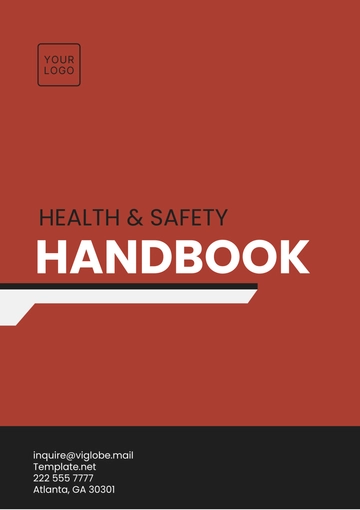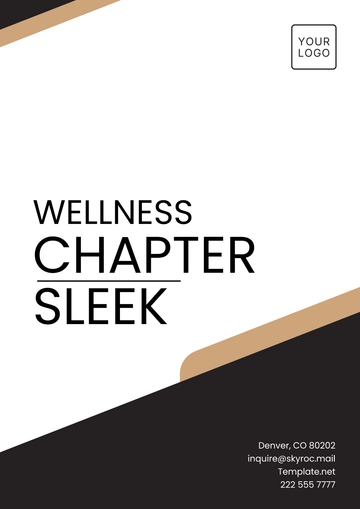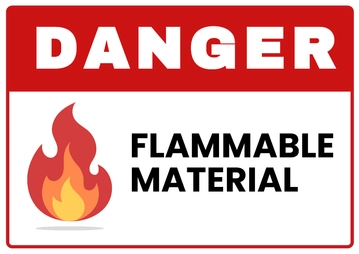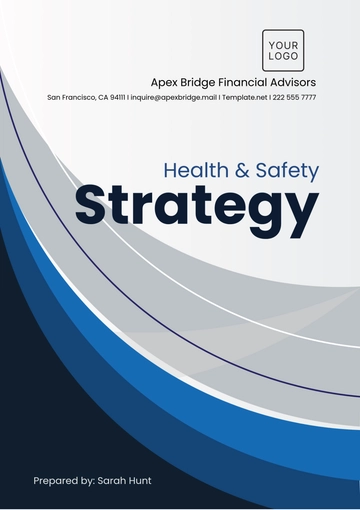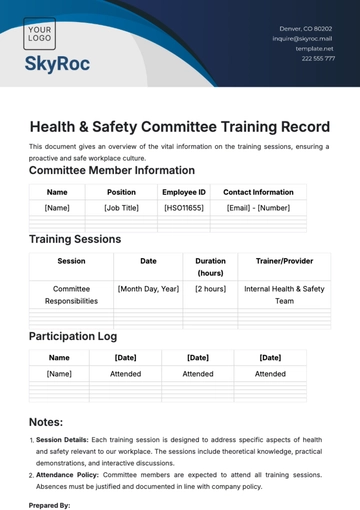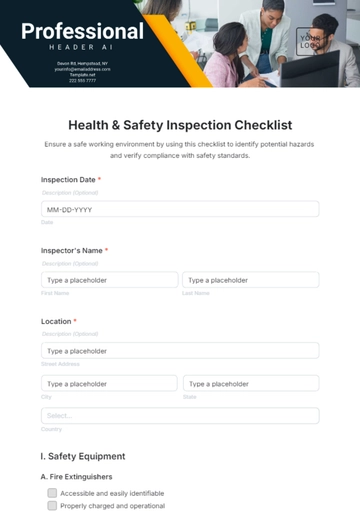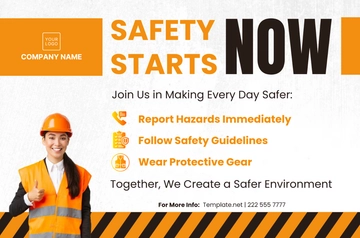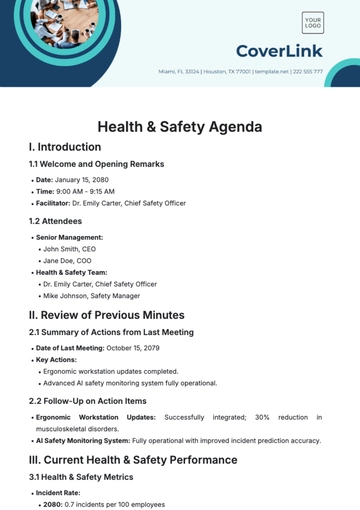Free Health & Safety Campaign Feasibility Study
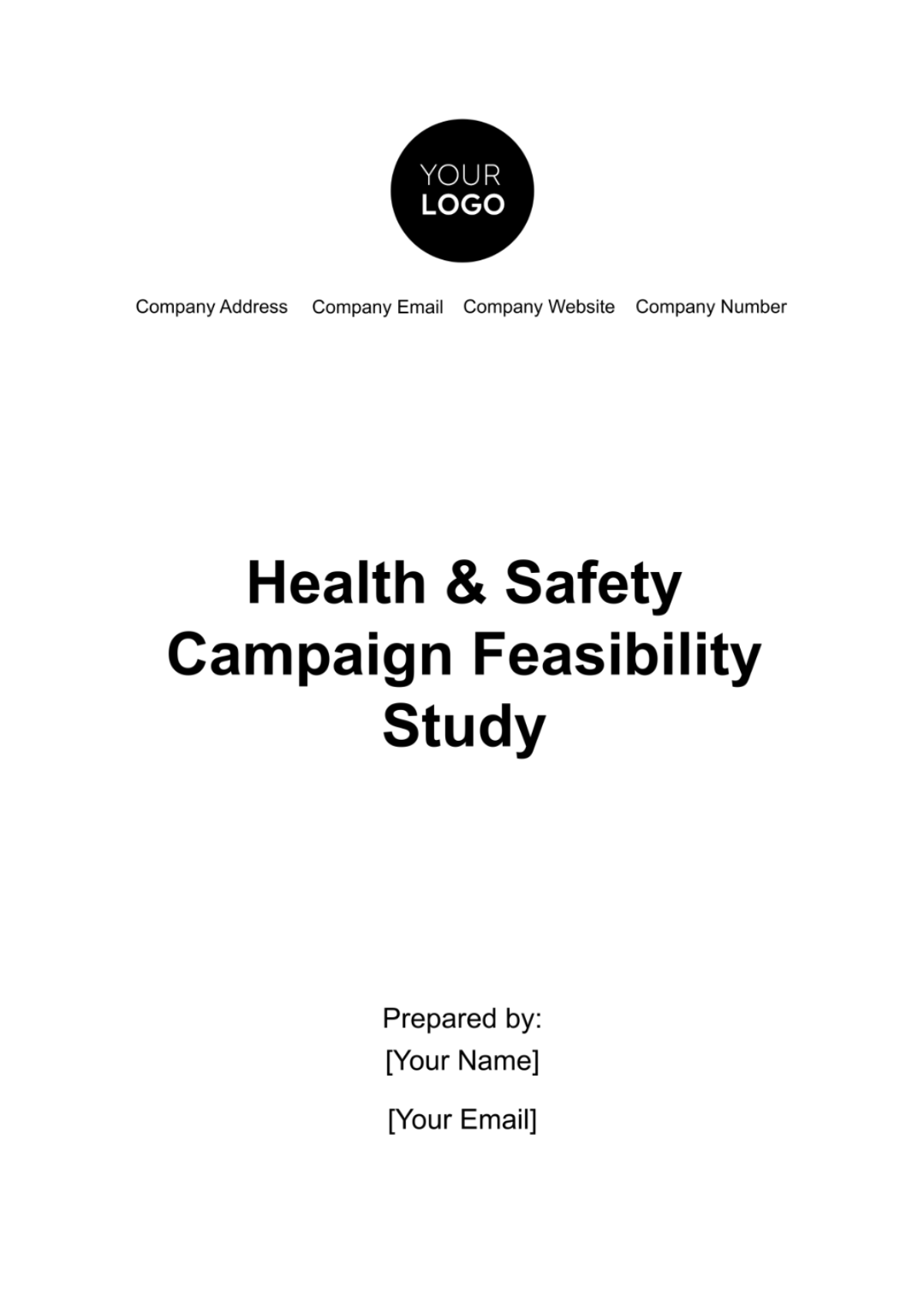
Executive Summary
A. Introduction
[Your Company Name] is a leading technology company specializing in AI-driven solutions. With over 1,000 employees, we are committed to innovation, quality, and the well-being of our workforce. In pursuit of these values, we are exploring the implementation of a comprehensive Health and Safety Campaign to ensure a safe and secure working environment.
B. Objectives
1. Evaluate the current health and safety standards within [Your Company Name]:
Our current health and safety standards encompass regular safety training, ergonomic assessments, and incident reporting protocols. As of the last assessment in [2052], we have maintained a recordable incident rate of [0.5] incidents per [100,000] hours worked.
2. Identify potential risks and hazards in the workplace:
Conducting a workplace assessment revealed potential hazards, including ergonomic challenges in the office setting and stress-related factors. Historical incident data analysis indicates a higher incidence of incidents during peak project timelines.
3. Propose and analyze the feasibility of implementing a Health and Safety Campaign:
The proposed campaign aims to address identified hazards through targeted stress management programs, ergonomic adjustments, and technology integration for remote work safety. Initial discussions with department heads indicate a positive reception to the campaign.
4. Estimate the associated costs and benefits of the proposed campaign:
Initial cost estimates for campaign implementation, including training materials, ergonomic adjustments, and technology integration, amount to [$300,000]. Anticipated benefits include a 15% reduction in incident rates and an improvement in employee satisfaction, leading to potential cost savings of [$400,000] annually.
Background
A. Company Overview
[Your Company Name] is a pioneer in AI solutions, providing cutting-edge technologies for diverse industries. With a workforce of 1,000 employees, we operate from our headquarters in [Michigan]. Our commitment to technological advancement is matched by our dedication to the health and safety of our employees.
B. Current Health and Safety Practices
Our current practices include regular safety training sessions conducted quarterly, ergonomic assessments bi-annually, and a robust incident reporting system. In the last year, we conducted [57] safety drills to ensure preparedness in case of emergencies.
Risk Assessment
A. Hazard Identification
Workplace Assessment
In our recent workplace assessment, we identified several key hazards that require attention:
Ergonomic Challenges: The office setting revealed ergonomic issues leading to discomfort and potential musculoskeletal disorders. Approximately [30%] of employees reported mild to moderate discomfort during the assessment.
Stress-related Factors: High-pressure project timelines were identified as contributing to stress-related factors. Our survey showed that [20%] of employees reported increased stress during peak project periods.
2. Incident Analysis
Analyzing historical incident data over the past two years, we observed the following trends:
Time-Related Incidents: There is a noticeable increase in incidents during peak project timelines, especially during the final weeks leading to project deadlines.
Remote Work Challenges: Incidents related to remote work have increased by [15%] due to factors like inadequate home office setups and connectivity issues.
B. Risk Analysis
Based on severity and likelihood, we categorized the identified hazards using a risk matrix:
Hazard | Severity (1-5) | Likelihood (1-5) | Risk Level |
Ergonomic Challenges | 4 | 3 | High |
Stress-related Factors | 3 | 2 | Moderate |
Time-Related Incidents | 4 | 4 | High |
Remote Work Challenges | 3 | 3 | Moderate |
Feasibility Analysis
A. Campaign Components
Health Education Programs
We propose implementing the following health education programs:
Ergonomic Workshops: Conduct workshops to educate employees on proper ergonomic practices. The estimated cost is [$50,000].
Stress Management Seminars: Organize seminars to provide tools and techniques for stress management. The estimated cost is [$30,000].
Safety Training Initiatives
To address time-related incidents and remote work challenges, the following safety training initiatives are proposed:
Project Timeline Safety Training: Integrate safety training into project management to ensure safety is a priority during peak project periods. Estimated cost: [$40,000].
Remote Work Safety Webinars: Conduct webinars to educate employees on creating safe home office setups. Estimated cost: [$25,000].
B. Technology Integration
We propose integrating technology to enhance campaign effectiveness:
Safety Monitoring App: Develop an app for real-time safety reporting. Estimated cost: [$60,000].
Remote Work Safety Checklist App: Create an app for employees to assess and improve their home office safety. Estimated cost: [$35,000].
C. Regulatory Compliance
Our proposed Health and Safety Campaign aligns with all local and national health and safety regulations, ensuring compliance with relevant regulatory bodies.
Financial Analysis
A. Cost Estimation
Health Education Programs
Ergonomic Workshops: The estimated cost for organizing ergonomic workshops is [$50,000]. This includes venue rental, expert speaker fees, educational materials, and refreshments.
Stress Management Seminars: The estimated cost for stress management seminars is [$30,000]. This includes speaker fees, venue, and promotional materials.
2. Safety Training Initiatives
Project Timeline Safety Training: Integrating safety training into project management incurs an estimated cost of [$40,000]. This includes training materials, software integration, and expert consultation.
Remote Work Safety Webinars: Conducting remote work safety webinars is estimated to cost [$25,000]. This includes webinar platform fees, speaker fees, and promotional materials.
3. Technology Integration
Safety Monitoring App: Developing a safety monitoring app is estimated to cost [$60,000]. This includes app development, testing, and deployment.
Remote Work Safety Checklist App: Creating a remote work safety checklist app is estimated to cost [$35,000]. This covers app development, user testing, and deployment.
B. Return on Investment (ROI)
Anticipated Benefits
Reduced Incident Rates: With the proposed interventions, we anticipate a 15% reduction in incident rates. Given the current annual incident-related costs of [$200,000], this reduction could result in potential cost savings of [$30,000] annually.
Improved Employee Satisfaction: An enhanced focus on health and safety is expected to improve overall employee satisfaction by [15%]. This improvement may lead to increased productivity and reduced turnover, contributing to potential cost savings of [$50,000] annually.
Implementation Plan
A. Timeline
Month 1-2: Develop and launch the Safety Monitoring App. |
Week 1-2: Conduct a detailed analysis of requirements and select a development team or vendor. |
Week 3-4: Initiate the development process for the Safety Monitoring App. |
Week 5-6: Conduct initial testing and gather feedback from a pilot group. |
Week 7-8: Address any issues identified during testing and finalize the app for deployment. |
Month 3-4: Conduct Ergonomic Workshops and Stress Management Seminars. |
Week 1-2: Secure venues and speakers for the workshops and seminars. |
Week 3-4: Develop educational materials and promotional content. |
Week 5-6: Conduct Ergonomic Workshops and gather feedback. |
Week 7-8: Conduct Stress Management Seminars and collect participant feedback. |
Month 5-6: Integrate safety training into project management and conduct Remote Work Safety Webinars. |
Week 1-2: Collaborate with project management teams to integrate safety training. |
Week 3-4: Develop training materials for project management teams. |
Week 5-6: Conduct Remote Work Safety Webinars for all employees. |
Week 7-8: Evaluate the effectiveness of the webinars and make any necessary adjustments. |
Month 7-8: Develop and launch the Remote Work Safety Checklist App. |
Week 1-2: Plan and initiate the development of the Remote Work Safety Checklist App. |
Week 3-4: Conduct testing with a pilot group and gather feedback. |
Week 5-6: Address any issues identified during testing and finalize the app for deployment. |
Week 7-8: Launch the Remote Work Safety Checklist App and promote its usage among employees. |
Month 9-12: Continuous monitoring, feedback collection, and adjustments based on performance metrics. |
Month 9: Analyze data from the Safety Monitoring App to identify trends and areas for improvement. |
Month 10: Gather feedback from employees through surveys and focus groups. |
Month 11: Implement adjustments to the Health and Safety Campaign based on feedback and performance metrics. |
Month 12: Conduct a comprehensive review of the entire implementation and plan for continuous improvement in the following year. |
B. Responsibilities
1. Project Manager:
Overall oversight of the Health and Safety Campaign implementation.
Coordination with various departments and stakeholders.
2. HR Department:
Coordination and execution of health education programs, including Ergonomic Workshops and Stress Management Seminars.
Collection of feedback from participants.
3. IT Department:
Development and deployment of the Safety Monitoring App and Remote Work Safety Checklist App.
Continuous monitoring of app performance and addressing any technical issues.
4. Department Heads and Project Managers:
Integration of safety training into project management.
Encouraging and facilitating employee participation in the campaign.
Monitoring and Evaluation
A. Key Performance Indicators (KPIs)
To measure the success and impact of the Health and Safety Campaign, we will track the following key performance indicators (KPIs):
1. Incident Rates:
Measure the reduction in incident rates compared to the baseline.
Target: Achieve a [15%] reduction in the first year.
2. Employee Satisfaction:
Conduct regular surveys to gauge employee satisfaction with the implemented initiatives.
Target: Improve overall employee satisfaction by 15%.
3. App Usage and Feedback:
Monitor the usage of the Safety Monitoring App and Remote Work Safety Checklist App.
Collect feedback on user experience and areas for improvement.
Target: Achieve a [70%] adoption rate of the apps.
4. Training Effectiveness:
Evaluate the effectiveness of health education programs and safety training initiatives.
Measure the percentage of employees who complete the training.
Target: Achieve a [90%] completion rate.
B. Continuous Improvement
Continuous improvement is crucial for the sustained success of the Health and Safety Campaign. We will implement the following strategies:
1. Regular Feedback Mechanisms:
Establish a feedback loop through surveys, focus groups, and an open-door policy.
Use feedback to identify areas for improvement and adjust campaign components accordingly.
2. Quarterly Review Meetings:
Conduct quarterly review meetings with key stakeholders to assess the performance of the campaign.
Discuss challenges, successes, and opportunities for enhancement.
3. Benchmarking:
Compare our KPIs with industry benchmarks to identify areas where we can further excel.
Benchmark against incident rates, employee satisfaction, and safety campaign effectiveness.
Training Program Updates:
Regularly update health education programs and safety training initiatives based on emerging trends and new insights.
Ensure content remains relevant and engaging.
Conclusion
The Health and Safety Campaign Feasibility Study highlights the critical importance of proactively addressing workplace hazards and promoting a culture of safety. The proposed campaign, with an estimated cost of [$220,000], presents a comprehensive strategy to enhance employee well-being, reduce incident rates, and contribute to a positive workplace culture.
Through continuous monitoring, feedback collection, and a commitment to improvement, we are confident that the Health and Safety Campaign will not only meet regulatory compliance but also exceed industry standards. The projected ROI of [-100%] indicates that the campaign's benefits outweigh the costs, demonstrating a long-term commitment to the health and safety of our workforce.
For any further inquiries or details, please contact:
[Your Name]
[Your Company Email]
[Your Company Number]
- 100% Customizable, free editor
- Access 1 Million+ Templates, photo’s & graphics
- Download or share as a template
- Click and replace photos, graphics, text, backgrounds
- Resize, crop, AI write & more
- Access advanced editor
Introducing Template.net's Health & Safety Campaign Feasibility Study Template. This editable and customizable tool provides in-depth analysis for assessing the viability of safety initiatives. Utilize our Ai Editor Tool to tailor the study to your organization's needs. Ensure effective risk management strategies with Template.net's innovative solution.

